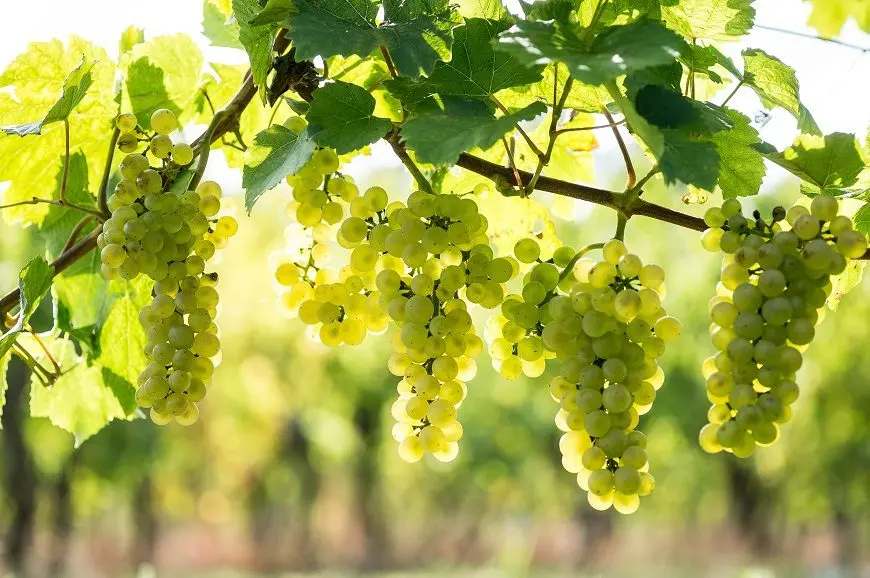Pinot Blanc wine is made from the grape variety of the same name (another name is Pinot Bianco). This is a dry or semi-dry white wine, often perceived as the “little brother” of Chardonnay. The classic representatives of this species are always light, refreshing, depending on the manufacturer, the drink can be sweetish, sometimes nutty notes are felt in the profile. Pinot Blanc grapes are also used to make sparkling and dessert wines.
Description
The homeland of the variety is the French region of Alsace. Genetic studies confirm that Pinot Blanc is a mutation of Pinot Grigio, which in turn is descended from Pinot Noir.
This wine, of course, adds glory to Alsace, but constantly remains in the shadow of its more famous “compatriots” – Riesling and Gewürztraminer.
In France, this variety is known as Pinot Blanc, but in Italy it is called Pinot Bianco. However, the characteristics of the berries do not change from this. Compared to its cousins, Pinot Grigio and Pinot Gris, Pinot Blanc is rounder, less acidic and less fruity, rarely aged in oak barrels and often marketed young.

Regional features
- Alsace, France. Just the case when the wine is aged in a barrel, the drink turns out to be velvety, spicy, with notes of almond and apple. Quite often, sparkling Cremant d’Alsace is made on its basis. In accordance with the internal rules of the Alsace appellation, Pinot Blanc wine can contain the Auxerrois variety, and the manufacturer is not required to indicate this on the label, much less disclose the percentage of varieties. Pinot Auxerrois is almost indistinguishable from Pinot Blanc, only less acidic.
- Burgundy, France. Pinot blanc is rarely grown in this region, but it is often used in blends, especially in sparkling wines. Some oenologists believe that the birthplace of the variety is precisely Burgundy, and not Alsace.
- Italy. Here the wine is especially light and “ringing”. Pinot Blanc is also part of the local sparkling Franciacorta.
- Germany and Austria. A regional variation called Weissburgunder is very refreshing and invigorating. In Austria, Pinot Blanc berries are often left on the vine for as long as possible until they begin to raisin, and then they are made into the sweet dessert wine trockenbeerenauslese.
Other producing countries of Pinot Blanc: Argentina, Canada, USA, Uruguay, Slovenia, Croatia (in the last two the variety is called Beli Pinot).

Taste
As already mentioned, Pinot Blanc is very similar to the more famous Chardonnay, it is medium or full-bodied, the bouquet is not too pronounced, rather simple. This is a fairly sour wine, depending on the manufacturer it can be tart. In the aroma, one can distinguish citruses, melon, pear, apricot, sometimes smoky or mineral nuances.
How to drink
Pinot Blanc is lost against the background of food with a strong taste, so it is not recommended to serve it with spicy dishes. Ideal gastronomic pairings are seafood, meat without spices, white sauce or butter-based sauce, young cheese and poultry.










